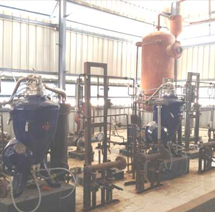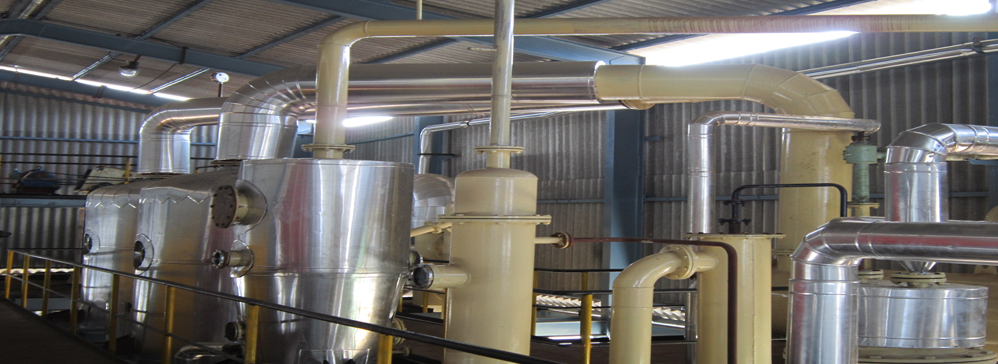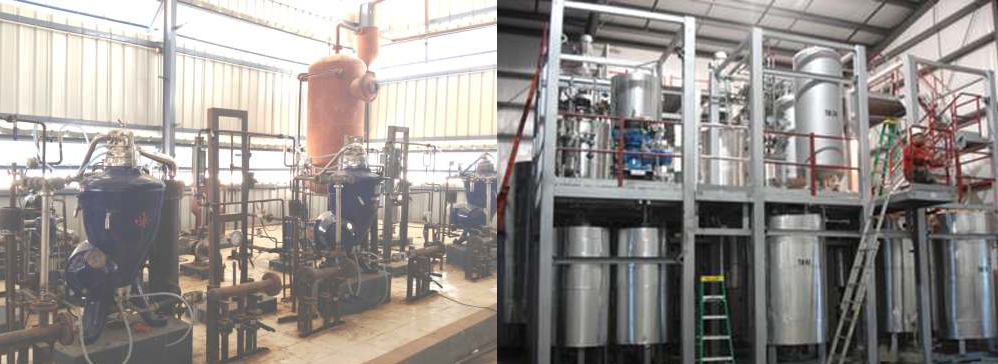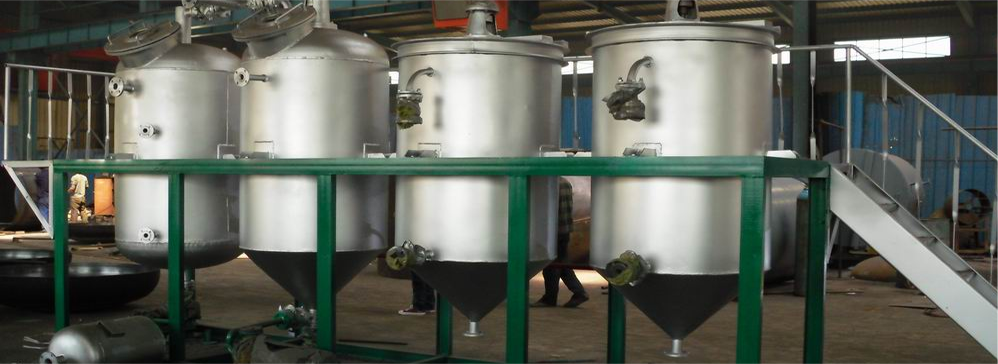





Degumming
The process has been developed which utilises the phenomenon hydratable phospholipids contains polar groups which form liquid crystal in connection with water. At slight above the temperature they form a laminar structure which are insoluble in oil and are capable of absorbing other impurities.
In the total degumming process, oil is mixed with hot water, caustic lye, phosphoric acid in neutralise and is given proper retention time in a retention tank so as to convert all non-hydrated gums to lyso form which forms more stable hydratable gums which can be separated out from the oil by centrifugation.
Crude oil is pumped in a continuous and constant stream by pump heated/cooled to required temperature in the plate heat exchanger NT6, oil is mixed with control quantity of acid / lye and phosphoric acid in high shear mixer and fed to the neutraliser and then to retention tank. The oilâ€"acid mixer is retained for sufficient time to properly condition the oil in retention tank. The oil after conditioning is heated to inactivate and help to separate with centrifugal separator where the oil and hydrated gums are separated.
This process has been tried and tested in case of rice bran oil. For other oils like palm & sunflower different route of neutralisation, degumming and washing is used as per the feed oil.
The process varies from oil to oil and also depends on the source of the oil i.e, whether it is extracted or it is crushed in expeller. After degumming the oil is sent directly for the bleaching process.






